SteelSeries Siberia V2 USB headset review
When the SteelSeries Siberia V2 headset arrived at the studio, I was looking forward to seeing what changes they had made, as I was already using the original Sibera as my PC gaming headset of choice. Fortunately, there were very few major changes, but the one big update to the line was most welcome.
The Siberia V2 is a headset designed for gamers, and allows you to opt for either using the standard 3.5″ min-jacks for your headphone and mic, or you can opt to plug the lines into a supplied USB soundcard which delivers a much more robust sound. The Siberias are big and chunky over the ear affairs, like old school studio cans. The styling is very much in line with some of their other peripherals, such as the retro-cool 6G v2 keyboard, both of which adopt a very simple functional design without a lot of flair. Unlike many other headset makers who opt for sometimes sci-fi chic in their designs, SteelSeries has stuck with a classic styling that makes them stand apart.
The ear cups are covered in a soft material which is well padded for comfort, and as someone who is very particular about how a headset feels, these held up without being distracting even in marathon Left 4 Dead 2 sessions. The USB soundcard provides volume control, as well as a mute and mic switch, but SteelSeries also included inline controls directly on the headphone cord itself. This is great for those times you want to take the headset with you and don’t need the 7.1 USB driver, like when using them with a laptop.
The Big Change
If you’ve owned the first iteration of the Siberia, you probably hated the mic. I know I did. The original came with a separate clip-on style mic, complete with its own thinner cord which ran beside the headphone cord, held together with small plastic clips. This did offer some flexibility, but there were two major drawbacks. The double cable was much more prone to getting tangled up with other items on your desk, so unless you kept the desktop spartan, something was bound to get entwined in there. The separate mic could also be a pain to position. You could either clip it to your clothing, or use the supplied angle bracket to mount it somewhere on your desk or monitor. Sure it gave you options, but they were all second best.
In the new model, the mic is now built into the left ear cup, and is easily extended and positioned. It made a huge difference in-game, as I didn’t have to worry about repositioning either the mic or myself for optimal voice quality. This alone almost makes it worth the upgrade, or at least relegating the first version to a secondary headset for other purposes.
Sound Quality
The Siberias deliver great ingame sound, especially when driven by the 7.1 virtual surround USB sound card. Even at high volumes (volumes you shouldn’t be listening to anything at, I have to add), there’s little to no noise, and it largely maintains clarity. Many headsets today can be overly aggressive when it comes to bass, as it’s in our nature to say “Wow, listen to that bass”. SteelSeries thankfully haven’t gone this route, and it shows.
They deliver a balanced sound reproduction, and even when used for music, the bass is strong, but in no way overpowers the high and mid tones. For testing music, I often default to using Underworlds live album Everything Everything. The song Rez/Cowgirl is a great test of how a headset maintains the highs when the bass kicks in, and the Siberias handle this exceptionally well. Too often, bass heavy headphones like the Beats by Dr. Dre series overpower any kind of subtlty in the upper range.
Changes going forward
If/when SteelSeries launches a Siberia V3, I would love to see them take the cabling in a slightly different route. Instead of having two separate jacks for headphone and mic, I would prefer to see a single 3.5mm jack packed in with a splitter. This way, if I wanted to I could use the same headset for my phone as well as home rig and home theatre system. On that front, I was a little disappointed to not see a 3.6mm to quarter inch adapter, which is something that shipped with the original line up.
This is only a minor gripe, of course. Overall the Siberia V2 headset is a great design, and since the release of the V2, SteelSeries has adapted it for a variety of uses, including a version compatible with the Xbox and PS3, as well as a neck band version for iDevices, which should work with other mobile devices, though the inline remote may function differently.
The Specs
Headphones
•Frequency response: 18 – 28,000 Hz
•Impedance: 32 Ohm
•SPL@ 1kHz, 1 Vrms: 112 dB
•Cable length: 9.8 ft. (1 + 2 = 3 m)
•Jacks: 3.5 mm
Microphone
•Frequency response: 50 – 16,000 Hz
•Pick up pattern: Uni-directional
•Sensitivity: -38 dB
Soundcard
•USB: 2.0
•Surround sound: Virtual 7.1
•Equalizer: 12 channels
•Jacks: 2 x 3.5 mm (USB cable included)
•Operating systems: Win XP/Vista/Win 2000/Win 98/Win ME
Gallery

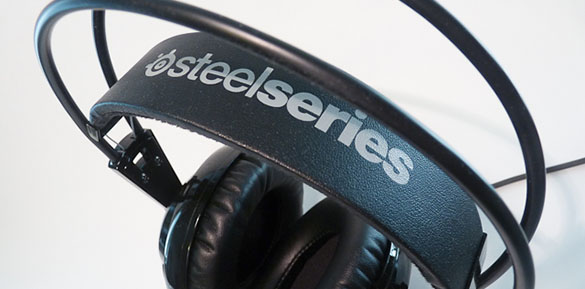

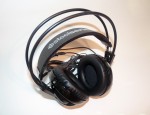
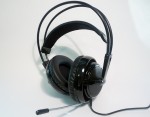
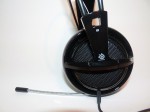
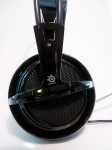
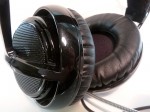




Those look soo sexy how much do they run right now i’m using the razer orcas
http://ipodtouch4greview.weebly.com/
[…] site: rgbFilter » SteelSeries Siberia V2 USB headset review This entry was posted in headset review, usb headset review and tagged headset review, usb […]
Both of those headphones have their similarities and yet both have their unique style and prospects. I am sure that many will probably like to have this kind of headset.
bose cinemate gs series ii